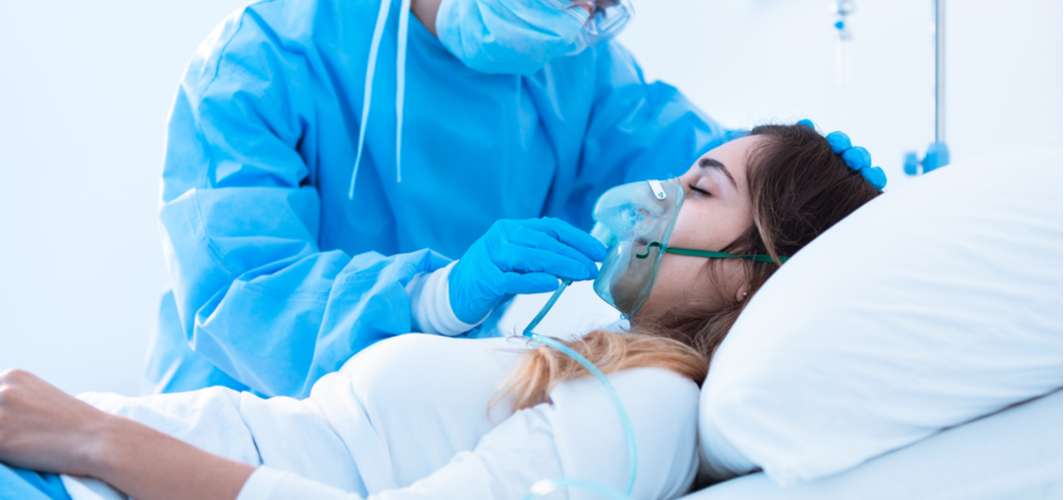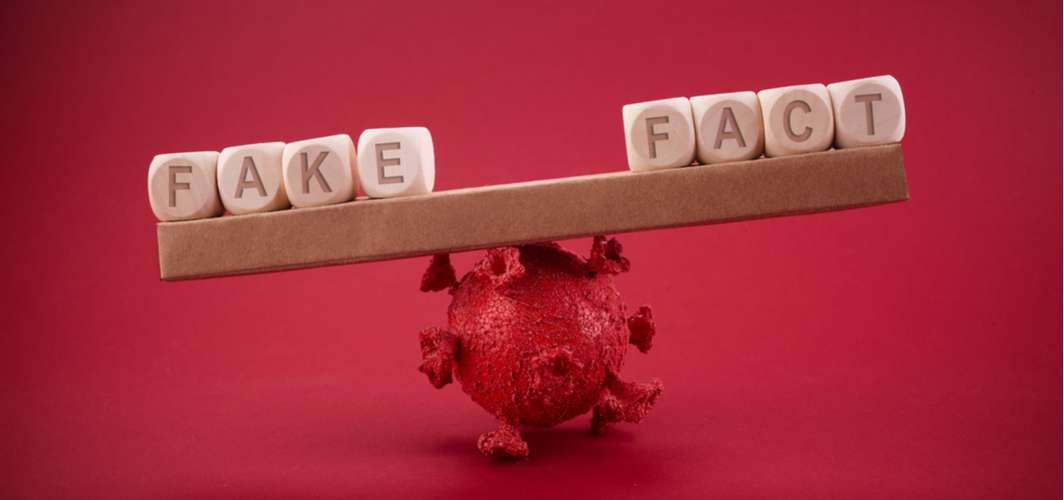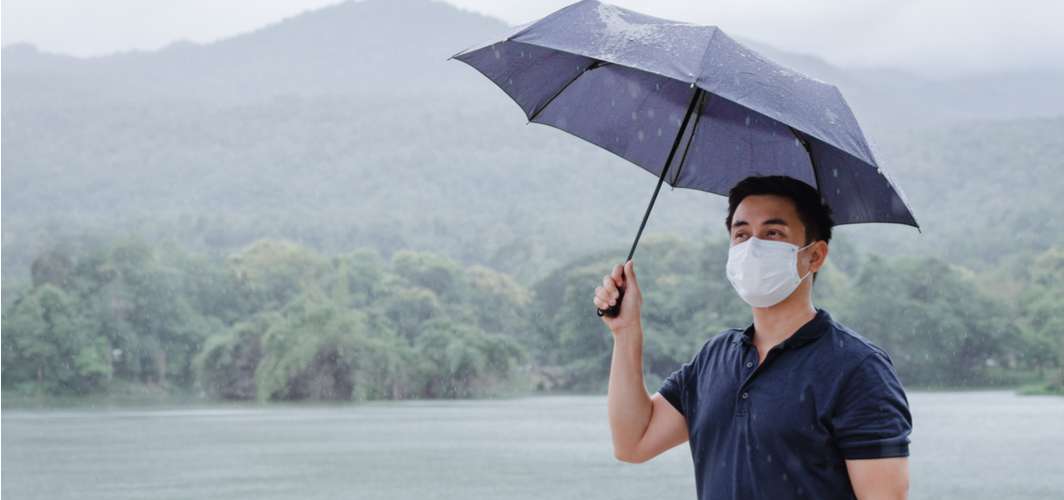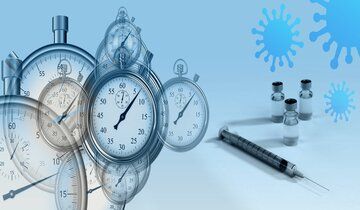Coronavirus Updates
Why Do Some COVID-19 Patients Require Oxygen Therapy?
6 min read
By Apollo 24/7, Published on - 23 April 2021, Updated on - 18 October 2022
Share this article
0
17 likes

The human body requires oxygen to survive and to carry out various vital functions. The respiratory system works along with the circulatory system to provide oxygen to the body. When oxygen is inhaled, it goes to the lungs and then moves into the blood vessels and mixes with the blood. This oxygen-rich blood is then circulated in the cells and tissues of the body.
However, due to inflammation and infection in the lungs, some people suffering from severe COVID-19 infection develop hypoxemia (low oxygen levels in the blood). These patients require medical oxygen to restore the oxygen saturation of the body.
What is medical oxygen?
Medical oxygen is a highly pure form of oxygen that is used to improve the oxygen levels in people suffering from critical conditions such as chronic obstructive pulmonary disease (COPD), cardiac or respiratory arrest, shock, cyanosis, and severe hemorrhage. Medical oxygen is either provided through a vacuum insulated evaporator (used to store liquid oxygen), oxygen cylinder, or oxygen concentrator (separates oxygen from the atmospheric air).
Recommended Read: Oxygen Concentrators: Everything You Need to Know
Why do some COVID patients require oxygen therapy?
The novel Coronavirus, SARS-CoV-2, binds with the ACE-2 receptors present in the lungs. The virus infects the epithelial cells that line the respiratory tract and protect the airway tract from pathogens and infections. Once they get infected, a series of changes occur in the body:
- The exchange of oxygen and carbon dioxide in the alveoli (tiny sacs in the lungs) gets disrupted.
- This infection triggers the body’s immune system and it releases immune cells such as cytokines and interleukins to fight the infection. When this immune response continues for a long time, it causes inflammation and further impedes the transfer of oxygen in the lungs.
- Due to persistent infection, people with severe COVID-19 may also develop swelling and fluid build-up in the lungs, ultimately resulting in pneumonia.
- Severe damage to the alveoli can also result in Acute Respiratory Distress Syndrome (ARDS), which is characterized by severe breathlessness or rapid breathing pattern.
All these factors can make it difficult for the patient to breathe normally, and they end up requiring oxygen therapy.
Do all COVID patients require supplementation of oxygen?
All COVID-19 positive patients do not require oxygen supplementation. The signs of oxygen distress that could be seen in COVID-positive patients include:
- Breathlessness
- Rapid, shallow breathing
- Increased heart rate
- Increased blood pressure
- Bluish discoloration of the hands, feet, and face
- Fatigue
- Chest pain, fever, and cough indicating pneumonia
- Confusion
Do all the patients in need of oxygen show signs?
Not all COVID-infected patients show signs of oxygen distress. Various case studies have reported incidences of happy hypoxia or silent hypoxia in COVID-infected patients. In silent hypoxia, the infected patients have extremely low blood oxygen levels, but they do not develop breathlessness or any other symptoms of oxygen distress. This has been one of the major reasons for pulmonary thromboembolism and sudden cardiac arrest. Silent hypoxia may accompany other symptoms such as muscular pain, fatigue, fever, and cough.
Tests that help in determining oxygen requirement in COVID patients
If a COVID-positive person does not show any symptoms of hypoxia or if the doctors need to determine the oxygen levels of the patient, some tests that may help determine the need for oxygen supplementation include:
- Pulse oximetry: Pulse oximetry is a test that helps in determining the amount of oxygen present in the blood with a help of a clip-like electronic device called a pulse oximeter. The optimal oxygen saturation (percentage of oxygen in the blood) or SpO2 levels of a healthy person usually range from 95% to 100%. According to the new ICMR-AIIMS clinical guidance for the management of adult COVID-19 patients, a person is said to be suffering from moderate COVID-19 if his or her SpO2 levels are between 90% to 93% on room air. The guidelines state that SpO2 levels below 90% on room air may imply severe COVID-19.
- Arterial blood gas saturation: This test helps in determining the efficiency of the lungs in exchanging gases, by measuring the amount of oxygen and carbon dioxide in the body. This test determines the partial pressure of oxygen in the blood (the ability of the lungs to transfer oxygen to the blood), SpO2, and partial pressure of carbon dioxide in the blood (the ability of the lungs to remove carbon dioxide from the lungs). Oxygen therapy is required when the partial pressure of oxygen falls below 60 mm Hg.
- Blood pH: This test helps in determining the pH of the blood in the arteries. Normally, the pH of blood is between 7.38 to 7.4. The pH of the blood gets low (between 0 to 6) when there is increased carbon dioxide in the blood.
Why has oxygen requirement increased during the second wave of COVID-19 infection?
It is a well-known fact that viruses continuously mutate (change) over time. While sometimes the new variants are weaker than the original virus, at other times, the variant gets stronger, allowing it to multiply faster and cause more infection.
India is currently suffering from a new variant of SARS-CoV-2, called B.1.617. Two mutations of this variant, E484Q, and L452R, have been found in India. Scientists and the health ministry of India have stated that this double mutant variant of the COVID-19 virus is more virulent. This new variant affects the lungs even more, resulting in increased demand for oxygen therapy.
Takeaway
Oxygen requirement has been reported in patients suffering from severe COVID-19 infection, which resulted in severe pneumonia, acute respiratory distress syndrome, or sepsis. As per the ICMR guidelines released on 21.April.2021, people with moderate symptoms may require oxygen support via a non-rebreathing face mask to achieve the target SpO2 levels between 92% to 96%. On the other hand, severe cases may need NIV (Non-Invasive Ventilation) or HFNC (High flow nasal cannula) respiratory support to stabilize SpO2 levels.
Due to the unprecedented increase in the number of COVID-19 cases during the second wave, there is a surge in the demand for medical oxygen and antiviral drugs for the treatment of infected people. Doctors are requesting people to follow COVID-19 prevention norms such as staying indoors, wearing masks, and maintaining physical distance, to reduce the pressure on healthcare infrastructure and resources.
You can also get an RT-PCR test done if you experience any symptoms of COVID-19.
Coronavirus Updates
Leave Comment
Recommended for you

Coronavirus Updates
Common Coronavirus Myths and Facts
Seeking the right information from verified sources at a time when we are fighting a pandemic is crucial. You should rely on directives issued by the WHO and MHA for the latest developments about COVID-19.

Coronavirus Updates
Will COVID-19 Infections Increase During the Monsoon Season?
A host of factors drive the spread of the novel Coronavirus, and weather conditions alone cannot alter the rate or intensity of the spread.

Coronavirus Updates
COVID-19 Vaccine: The latest updates
More than 150 COVID-19 vaccine candidates worldwide are in development. So far, 156 economies have signed up for COVAX, a WHO initiative, to deliver 2 billion doses by the end of 2021.
Subscribe
Sign up for our free Health Library Daily Newsletter
Get doctor-approved health tips, news, and more.
Visual Stories

COVID-19: The situation on ground [6th July 2021]
Tap to continue exploring
Recommended for you

Coronavirus Updates
Common Coronavirus Myths and Facts
Seeking the right information from verified sources at a time when we are fighting a pandemic is crucial. You should rely on directives issued by the WHO and MHA for the latest developments about COVID-19.

Coronavirus Updates
Will COVID-19 Infections Increase During the Monsoon Season?
A host of factors drive the spread of the novel Coronavirus, and weather conditions alone cannot alter the rate or intensity of the spread.

Coronavirus Updates
COVID-19 Vaccine: The latest updates
More than 150 COVID-19 vaccine candidates worldwide are in development. So far, 156 economies have signed up for COVAX, a WHO initiative, to deliver 2 billion doses by the end of 2021.